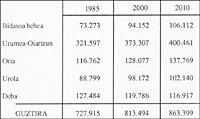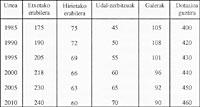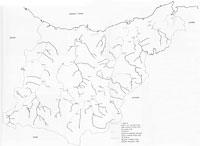Comprehensive water supply and cleaning plan of Gipuzkoa
Political representatives have assiduously defined that today the supply and cleaning of the waters of Gipuzkoa is at least equivalent to that of the Third World.
To demonstrate this it is enough to see the plans. About 50% of the population does not have water 24 hours a day at home. On the other hand, the high pollution suffered by the main rivers of the territory makes life in water impossible.
In addition, it should be noted that the crowd with water does not drink at all. Although in most cases it is acceptable or sustainable, the chemical category of drinking water established by national legislation is not reached. And, in general, there is no treatment center that can provide water from our rivers or springs.
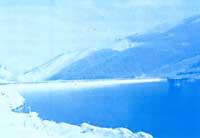
On the other hand, all the wastewater generated by man, agriculture or industry are poured directly into the rivers or the sea. In this way, evident pollution occurs in some main rivers and coastal areas. The reasons for this situation are many and deserve to be analyzed.
On the one hand, there are natural climatic problems: distribution of rains throughout the year very irregular. Consequently, the flow of the rivers is very variable. Very low in season, 20-30 times the average annual flow. In Gipuzkoa it rains quite (an average of 1400 mm/year), but the flow generated by that rain does not rot, most is lost in the sea.
On the other hand, the structure of the rivers and the geology of the territory, make the waters cannot be maintained and regulated in a natural way and do not present large streams of underground water. This lack of drinking water generates a shortage of water in homes and a strong contamination of rivers. There are also technical reasons. Although in the year 1964 the surface waters have been regulated and in the year 1971 a plan of regulation of resources has been developed, all these intentions have not been carried out entirely by socio-political problems. This has led Gipuzkoa to divide into two distinct zones: A wet Gipuzkoa with water regulated by reservoir and another dry Gipuzkoa without regulation.

Finally, it is worth mentioning some social reasons that have led to this situation.
On the one hand, the population and urban growth of the 60-70 years (since there is no regulated water) has forced to allocate water from any spring and stream to consumption; much of the rivers and streams to dry and consume water without good quality. This water used is poured into the rivers without any purification. On the other hand, and with exceptions, a policy has not been established to combat industrial pollution. As a result, there are very few industries that have a treatment station. This raises the pollution index of the rivers and makes the purification of the pollution technically difficult and insecure.
Integral Plan Integral Plan
Despite the fact that the attributions in water and sanitation correspond exclusively to municipal councils or associations, the Diputación Foral de Gipuzkoa, aware of the situation, commissioned the company Sener S.A. in 1985 to develop the Integral Plan. This plan should ensure technical solutions to problems, analyze the organization and offer the most suitable economic system for its management.
The basic principle of the Plan is the solution to the integral water cycle, that is, that the Gipuzkoans have enough water for our needs and that the rivers and the coasts reach their cleaning and life. As can be seen, the plan intends to analyze and solve not only the supply problem but also the cleaning problem.
After carrying out the necessary studies and establishing the technical objectives, this Plan proposes three types of technical solutions and a system of organization and management to solve problems.
Technical objectives to be met
With the aim of achieving the water supply to the municipalities of Gipuzkoa and the recovery of rivers and coasts, the objectives indicated below have been established.
* Quality of the water supply: The water should be potable, adapted to the level of orientation that the Spanish legislation and that of the European Economic Community grants. * Quality of the waters of the rivers: In no case will the quality of the future waters of the rivers be worse than the current one. Recovery of contaminated at least cyprínides (barb, loin, perch, etc.) Until you get life and reproduction. To achieve this goal, the highest pollution rates are shown in Table 1 (as recommended by the European Economic Community). * Quality of coastal waters: Pollution on the coast will decrease until any bathing site meets the standards set forth in the 1974 Paris Convention and the European Economic Community for bathing areas. The pollution rates that cannot be exceeded to achieve this objective are indicated in Table 2.
Analysis of needs
For the measurement of the water supply needs, a large study was carried out from the studies carried out by Martin Mateos for the Solid Waste Plan of Gipuzkoa. From this study, the hypothesis of average growth has been taken. The absence of migratory movement is a problem of submail and the summary of the basin is presented in Table 3.
In addition, a study of the endowment and its future evolution has been carried out. (see table 4). As can be seen, although initially part of an elevated endowment, in 25 years there is no significant increase (this Plan responds at least to the needs of 2010). This weak increase is mainly due to the decrease of leaks in the distribution networks and to the decrease of water consumption in the industries, due to the use of new technologies. However, an increase in water consumption in households is expected, as life is improved and a supply is achieved without restrictions. On the other hand, the demand for municipal gardening and road cleaning services will also increase water consumption.
Therefore, knowing the crowd and the endowment, the water needs are also known.
The rest of needs cannot be previously measured. In fact, the amount of water necessary for the cleaning of the rivers varies according to the characteristics of each river, that is, it depends on the pollution of each basin and the purge planned. The higher the performance of the purification stations, the lower the amount of water to be supplied. However, the economic cost and the risk of ecological imbalance will be higher, due to the possible failures in the management of the wastewater treatment stations.
Regulatory solutions for regulation
As mentioned above, one of the existing problems is the lack of regulation of water. Consequently, most of the water is lost in the sea. In addition, the flow of our rivers is insufficient to satisfy the life and consumption of this water. To solve this problem and achieve a regulation, this Plan proposes a special effort. In a simple way it would be possible to store the surplus water in winter for use in summer. In this way, the consumption of water in the villages and life in the rivers would be assured. This regulation is carried out through natural or artificial reservoirs with dams.
This Plan proposes the exploitation of two underground reservoirs (Mendaro, Elduain), with a flow of 450 l/s and the construction of 6 new reservoirs, until reaching a total of 11 in Gipuzkoa. All these buildings are presented in Table 5.
Supply Solutions Supply Solutions
For the global supply solution, the Plan proposes the creation of a single regional structure: Take from a reservoir and a regulated underground water reservoir, drinking water treatment center, population channels and distribution deposit structure.
This structure offers the advantage of unifying a distribution source for a region or area, thus ensuring the assistance of human and technical resources, the quantity and quality of the drinking water.
On the other hand, there is a drawback that most regions have a single source of supply, so a failure would affect the majority of the population. Despite this drawback, it must be said that it is small. In fact, the safety of the layout, its characteristics and, in general, the security currently offered by these buildings are good.
Sanitation solution
The solution chosen for sanitation has been in most cases regional.
The discharges of local origin and the industrial discharges that can be treated with them are collected in a network of collectors. The spills collected are transferred to the purification stations for their discharge to the river or sea once the purification has been carried out.
The most serious problems posed by sanitation, the suitability of purification stations, their technology and the conditions with respect to the receiver are as follows: Although in purification stations installed in the springs of the rivers with little amount of water in the field, the flow through regulated reservoirs has been collected, it is necessary to build high performance stations with high technology and nitrification processes of high energy consumption.
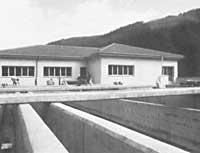
In the low zones and mouth of the rivers, the incidence of discharge in the wastewater treatment station is lower. Therefore, it is possible to build intermediate purification stations simpler and cheaper.
Finally, the waters of the purification stations that are carried out on the coast are poured into the sea at a depth of 30 to 40 meters, without any involvement to the mass of water. Therefore, very simple and inexpensive purification stations can be built, generating obstacles in the premises or eliminating greases and floating materials visible on the surface.
Autonomous solutions Autonomous solutions
Some cores are separated from regional solutions in terms of supply or sanitation. In these municipalities that make up 2% of the population of Gipuzkoa will be a traditional system of water supply or purification. Without large engineering constructions, but ensuring the quantity and quality of the water and taking measures so that its discharges do not cause losses in the river and marine life.
Explanation of a solution: Basin of the Oria

Due to the characteristics of this basin (lack of water, dispersed population, paper industry and discharges of these industries susceptible to be treated in combination with local discharges, etc.) It can be a fairly clear example to understand what this plan proposes to solve the problems of one of the most polluted rivers in the peninsula.
The following constructions are intended:
Buildings of regulation
- Reservoir of Laredo (Goierri) reservoir of Arriaran (Goierri) reservoir of Amundarain (Goierri) reservoir of Ibiur (Tolosaldea)
- Underground water well in Elduain (Tolosaldea).
These buildings regulate a water volume of 45.5 Hm 3 annually, ensuring a supply of 462 l/sec. and a discharge to the rivers of 1280 l/sec. (ecological flow).
Supply buildings
- Arriaran Treatment Center (Goierri)
- Amundarain Treatment Center (Goierri)
- Canal de Goierri
- Ibiur treatment centre (Tolosaldea)
- Tolosaldea Canal
- Andoain Outlet and Channel
- Andoain Treatment Center
- Deposits of deposits
Lasarte, Usurbil and Orio are supplied with other basins.
Sanitation constructions:
- Zegama wastewater treatment station
- Segura e Idiazabal wastewater treatment station
- Cleaning station of Ormaiztegi
- Collector Goierri
- Ordizia Treatment Station (Goierri)
- Amezketa Treatment Station
- Berastegi River Collector
- Collector Paper Industries
- Purge station of Ursabal (paper industries)
- Ibarra-Tolosa-Andoain collector
- Andoain Purification Center
- Collector Lasarte-Usurbil
- Usurbil collector
- Orio Purification Center
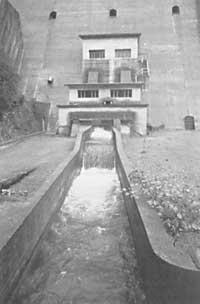
According to the objectives marked and after the execution of these constructions, the quality of the waters of the river Oria will remain as indicated in Table 6.
Management and Financing
The improvement of supply and sanitation requires an important investment in construction and maintenance. Even more if we take into account the delay and the increasing demand for water quality.
Depending on the water each one spends, it is necessary to establish a consumption rate, following the basic principle of the slogan "who pollutes pays".
Due to this delay, grants are necessary to obtain the most adequate rates and to be comparable to other cities in the community or other communities.
There should be a fee in the network primary. The City Council will pay it to the corresponding Consortium and this payment is expected to be 30-35 pts./m 3.

The average rate that the consumer would pay, once added to the previous costs the distribution costs of the city council, would be 55-60 pts/m 3. Cost per person and day 11 sts. Therefore, less than a "middle forest".
The industrial cleaning fee would be 13-15 pts/m 3.
According to how this Plan is managed, these figures can vary greatly, since the buildings of the different districts are in a very different situation. In addition, construction costs can vary considerably if municipalities manage individually or grouped.
If the management is carried out through a single jar, the rate would be between 50 and 60 pts/m 3 and be the same throughout the territory.
Carrying out an independent management of the rice basin (Bajo Bidasoa, Urumea-Oiartzun, Oria-Urola and Deba), obtaining the same subsidy for all the buildings under construction, the rate can be 47-81 pts./m 3 per district. This would mean a disproportion of 72%.
By making an independent management of the rice basin, but with subsidies selected by buildings, the differences can be reduced to rates of 50-75 pts./m 3. However, there would be a 50% disproportion.
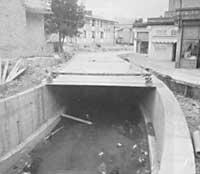
Finally, making an independent management of the rice basin, but getting a proportional subsidy to the rates, the differences can be reduced whatever you want.
Taking into account the small size of the territory, the ideal would be to create a single consortium, thus establishing a common fee for all Gipuzkoans.
Although, depending on river basins, 5 different consortiums can be created, they would be too small and therefore find great difficulties in management and exploitation. In addition, it would be very difficult to establish similar rates for different regions.
Buletina
Bidali zure helbide elektronikoa eta jaso asteroko buletina zure sarrera-ontzian






